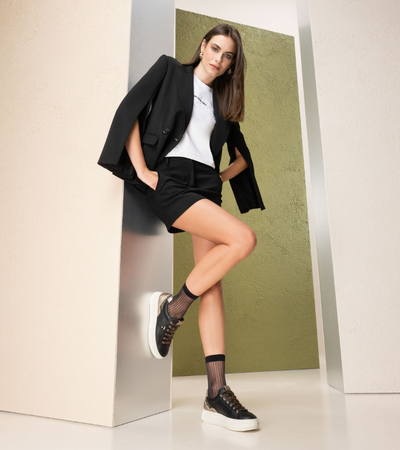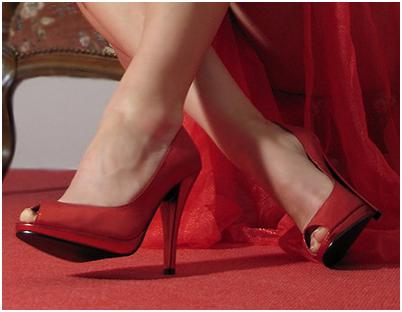How To Care For Your Shoes

A significant part of life includes taking care of items that we value - and what can be more valuable in our wardrobes than that favourite pair of shoes? Let’s take a look at how we can care for our shoes!
Top Tips For Keeping Your Shoes Perfect
- Don’t wear the same pair of shoes often. Allowing soles to properly recover will ensure that you will get the most out of your shoes. In most cases, the material on the sole of a shoe needs about 24 hours to recover its buoyancy and padding.
- For high heel lovers, make sure you keep a pair of flats handy in your car and change into them whenever you drive. Otherwise, you may risk breaking or damaging an expensive, valuable high heel.
- Clean your shoes frequently. For more, check out our section on cleaning shoes below.
- Protect your shoes from water and other elements simply by waxing or polishing your shoes frequently. This will protect your shoes and give them a nice, clean sheen. It is imperative to ensure that you pick the exact colour of wax/polish to match your shoes. Alternatively, you can buy a water-stain protective spray and apply it to your shoes.
- If you wear leather shoes in the rain, ensure that they dry completely before you wear them again.
- To deodorise your shoes, sprinkle some baking soda into them, shake them to evenly distribute the powder and then let the shoes stand overnight. Baking soda is renowned for absorbing odour-causing bacteria. When your shoes are ready, simply shake out the baking soda. As a secondary measure, you can also apply a shoe freshening spray to help deodorise.
Emergency Measures & Long-Term Care for Shoes
Wet Shoes
- Stuff soaking-wet shoes with newspaper and dry them away from direct heat.
- Direct heat can dry the leather too fast, causing it to crack — and once that happens, nothing can save your shoes.
Shoe Trees
- Shoe trees allow your recently worn shoes to contract and dry out to their ideal shape.
- After that, the shoes will have returned to their natural architecture and the trees can be removed.
Repair Work
- Ensure that you choose the best possible cobbler to re-sole or re-heel your shoes.
- To prevent permanent damage have all repair work done before it's absolutely necessary.
Suede
- Use a suede eraser to rub away small blemishes from the shoe.
- Then use a suede brush to restore the nap, or fuzz, of the leather.
- For maximum water protection, apply a suede-specific waterproof spray to the shoes.
Calfskin
- Use a conditioner/cleaner to remove surface residue and to keep leather soft and pliable.
- To achieve a fine lustre, wipe shoes with a damp cloth and allow them to dry at room temperature.
- Apply a coat of shoe cream or polish with a cotton flannel polishing cloth or horsehair dauber and allow to air dry.
- Remove excess polish by brushing with a horsehair brush and buff to a desired shine.
Casual Leather
- Apply a shoe cream using a soft cotton flannel cloth and allow the shoes to air dry.
- According to wear, the leather will lighten or darken.
- If your shoe has contrast stitching, apply some leather lotion or saddle soap.
Patent Leather
- Use a patent leather lotion with a cotton flannel cloth to remove any residue.
- After this, buff the shoes until they gleam with a soft cotton flannel cloth.
Polishing: The Materials
You'll need the right tools to polish your shoes, each with a crucial purpose:
- Shoe polish
- Welt brush
- Polishing cloth
- Polishing brush
- Sole dressing
How to Polish a Shoe
- Remove superficial dirt and stains by wiping your shoes down with a damp cloth.
- Wet the welt brush and scrub out the entire welt strip. (check out our guide to the anatomy of a shoe)
- Apply sole-edge dressing if your shoes need it. If you get this dressing on the uppers, it will permanently stain them. Let the edge dressing dry before you do anything else.
- Apply polish, using a circular rubbing motion. It’s important to remember that the more you rub, the better. Let the polish dry.
- Buff the entire shoe with a polishing brush. For extra gleam, hold the shoe between your knees and buff the toe vigorously with a lint-free cloth.
How to store your shoes
Careful, proper storage of your shoes is almost certain to preserve their longevity, so don’t just fling them on the floor when you’re not using them. Know how to store them so that their quality will be preserved for a long time.
- Keep similar groups of shoes together. Store dress shoes for formal occasions alongside one another, casual/exercise shoes in a different grouping, etc.
- Use a shoe rack for storage. This allows for easy, practical organisation of your shoes and gives them a perfectly-sized storage space which you’ll soon identify as the single go-to place for storing your shoes neatly.
- If you don’t have sufficient storage space for a proper shoe rack, you can store your shoes in door-hanging shoe bags so that they’ll be kept off the floor and use minimal wall space.
- Find a dark place with a consistent, moderate temperature in which to store your shoes. Prolonged exposure to sunlight or intense cold/heat will diminish the shoes’ quality. A cool, dark closet is usually the best place for storage.
- If a pair of shoes will be stored for at least 1 month before their next usage, stuff them with balled-up acid-free paper so that they will retain their shape.
- Any pair of shoes which will be stored for at least a month can also be kept in their original box. If the box in which they were contained at the time of purchase is no longer available, any box in which the shoes fit neatly will substitute perfectly.
- Consider purchasing boot stands to keep boots stored upright. Allowing the tops of boots to flop over could cause a permanent crease.
Just as important as knowing how to store your shoes is knowing what not to do. Here are the biggest shoe storage no-no’s.
- Never store shoes when they are wet, as they could become mouldy and retain a bad smell. It is especially vital not to store wet or damp shoes alongside pairs which are fully dry.
- Don’t wrap leather shoes in plastic. They need room to breathe when in storage and wrapping them in plastic could lead to mould or discolouration.
- Don’t store shoes with mothballs. While they might repel moths and bugs, they have an infusive smell which is likely to transfer to nearby shoes and will be very difficult to eradicate.
- Never stack shoes on top of each other, as this will cause them to lose their shape over time. Even stacking them with one shoe upside down over the other will most likely see them become misshapen.
- Don’t store shoes in areas where the temperature fluctuates greatly between intense cold and heat, e.g. basement or garage.
- Never stuff shoes with acidic paper. The acid will almost certainly damage the shoes’ material.





